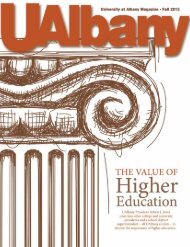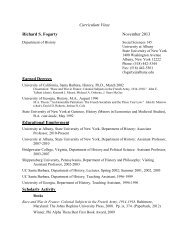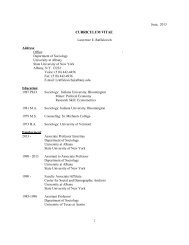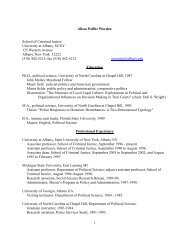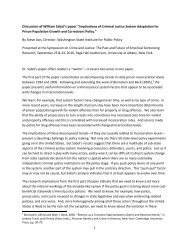Walking Corpses & Conscious Plants: Possibilist Ecologies in ...
Walking Corpses & Conscious Plants: Possibilist Ecologies in ...
Walking Corpses & Conscious Plants: Possibilist Ecologies in ...
Create successful ePaper yourself
Turn your PDF publications into a flip-book with our unique Google optimized e-Paper software.
B<strong>in</strong>gham 107<br />
Wrightson only drew the first ten. Though their direct <strong>in</strong>volvement with the project was<br />
limited <strong>in</strong> this respect, their vision was nonetheless <strong>in</strong>fluential <strong>in</strong> direct<strong>in</strong>g the path those<br />
who took over the project <strong>in</strong> the future would use to guide the narrative's outcome later<br />
on.<br />
Len We<strong>in</strong> became the editor of the series when it was redesigned and released the<br />
follow<strong>in</strong>g decade. We<strong>in</strong> was even responsible for recruit<strong>in</strong>g Alan Moore as a replacement<br />
for writer Mart<strong>in</strong> Pasko (Khoury and Moore 84). He extended a personal offer to Moore<br />
dur<strong>in</strong>g a phone call <strong>in</strong> November of 1983 which would become the catalyst for the series'<br />
monumental resurrection and a major break for Moore's career as well (Millidge Pg. 15,<br />
Panel 11). In a biographic called Alan Moore: Portrait of an Extraord<strong>in</strong>ary Gentleman,<br />
British comics creator and historian Gary Spencer Millidge writes, “Moore used Swamp<br />
Th<strong>in</strong>g to explore social issues from racism to environmental concerns with emotional<br />
depth, aga<strong>in</strong>st a background of existential horror. Along with the art of Steve Bissette<br />
and John Totleben, Moore turned the ail<strong>in</strong>g, mostly ignored title <strong>in</strong>to one of the most<br />
talked about comics of its time” (Millidge Pg. 16, Panel 2 & 3). Dur<strong>in</strong>g an <strong>in</strong>terview<br />
conducted by Eclectic Electric's Steve Hanson and Christian Martius, Moore gave a more<br />
detailed account of the series' success:<br />
I had a readership of about 25,000 people a month by the time of The Curse<br />
[Issue #40] and we got about 65,000 by the end of the series, at about a 1000<br />
every issue. If even 1% of these people get someth<strong>in</strong>g powerful from that comic,<br />
that’s an amaz<strong>in</strong>g amount of impact to have on the real world. This stuff that<br />
started out as shit <strong>in</strong> my head, now it’s hav<strong>in</strong>g an effect <strong>in</strong> other people’s heads<br />
(Moore. Northampton, UK. 3/8/1996)<br />
The spike <strong>in</strong> Swamp Th<strong>in</strong>g's popularity is a result of several factors; but, all of these seem<br />
dependent upon the project of artistic expression as account<strong>in</strong>g for the utterances of the<br />
past and attempt<strong>in</strong>g to resolve any problematic discrepancies with present perspectives.



